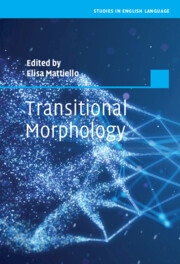This article investigates continuities and changes in abbreviation practices from late Middle English to twenty-first-century digital platforms. Adopting a diachronic perspective and lexicological framework, it quantitatively analyses frequency patterns across fifteenth-century memoranda, letters and administrative receipts, seventeenth-century letters and depositions, late nineteenth-century letters, early twentieth-century letters and a subcorpus of WhatsApp instant messages dating from 2018–19. It then presents analyses of the frequencies of various abbreviation forms, such as clippings, and abbreviated lexemes, such as their use for names, over time. The article then provides a qualitative analysis of these lexeme categories over the centuries, with a focus on specific examples. Major changes to overall abbreviation density across time are identified. The forms of abbreviation also go through major change, but the types of lexemes that are abbreviated stay more consistent over time. For example, abbreviations being used for closed-class function words such as the and that are dominant from the earliest data we have looked at to the present day. Overall, the study demonstrates how situating new media abbreviation practices within a historical continuum can enhance our understanding of them.
